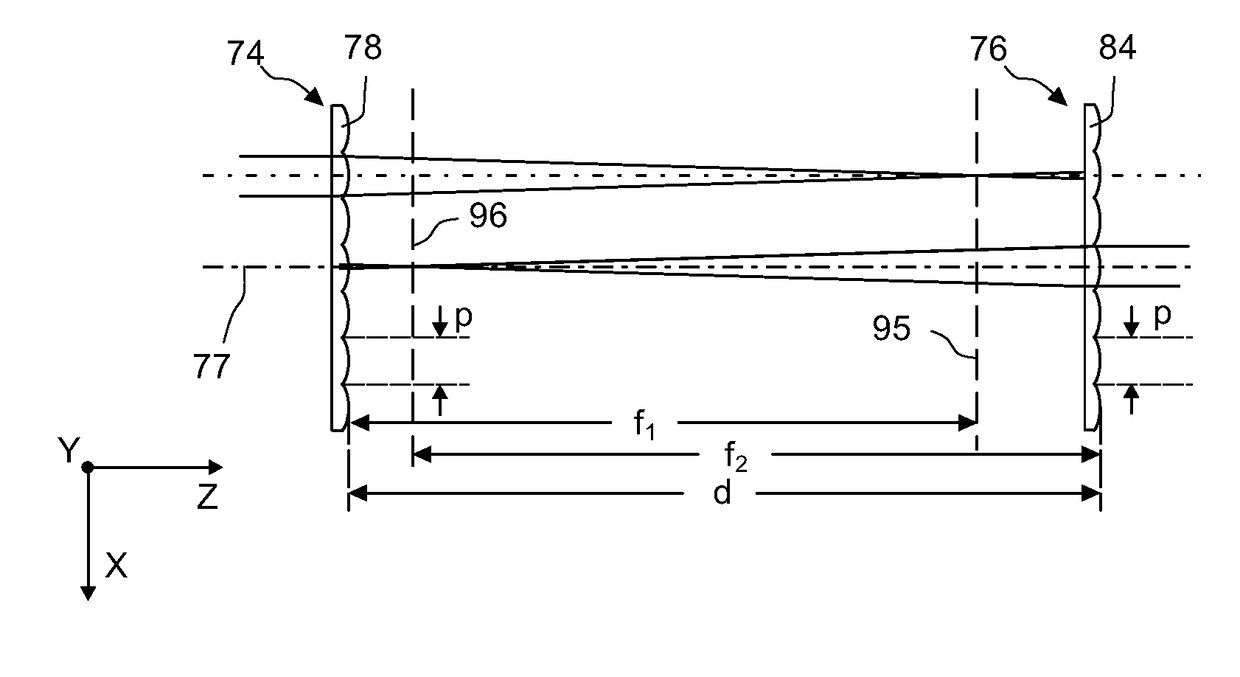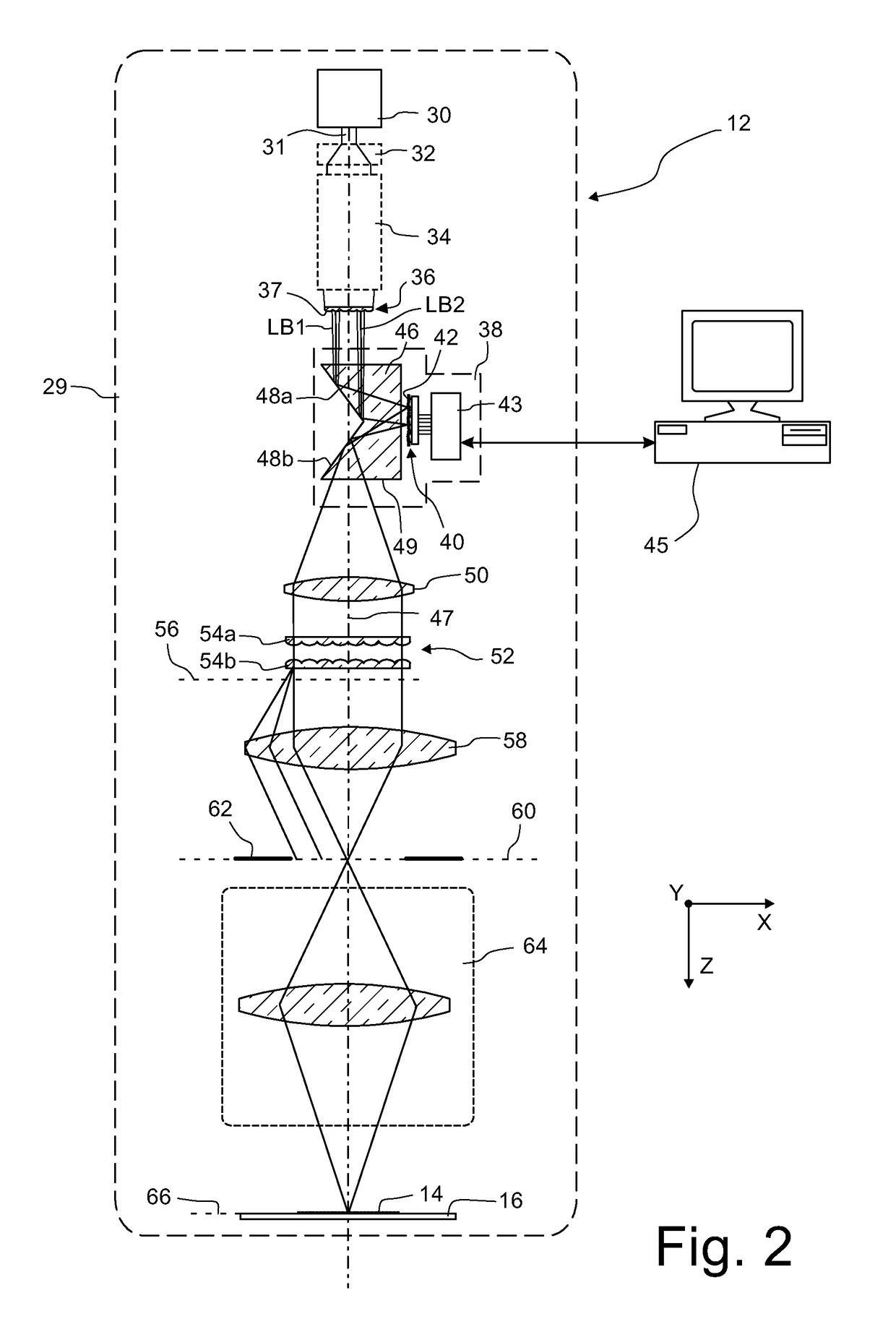Illumination system of a microlithographic projection exposure apparatus
a technology of exposure apparatus and exposure system, which is applied in the direction of microlithography exposure apparatus, photomechanical treatment, instruments, etc., can solve the problems of reducing the sensitivity of the optical integrator to transient variations of the angular light distribution of the incoming light, and achieves significant or even complete reduction of the main adverse effect of optical crosstalk, reducing the sensitivity, and increasing the divergence
- Summary
- Abstract
- Description
- Claims
- Application Information
AI Technical Summary
Benefits of technology
Problems solved by technology
Method used
Image
Examples
Embodiment Construction
I. General Construction of Projection Exposure Apparatus
[0056]FIG. 1 is a perspective and highly simplified view of a projection exposure apparatus 10 in accordance with the present invention. The apparatus 10 comprises an illumination system 12 which produces a projection light beam. The latter illuminates a field 14 on a mask 16 containing a pattern 18 of fine features 19. In this embodiment the illuminated field 14 has the shape of a ring segment. However, other shapes of the illuminated field 14, for example rectangles, are contemplated as well.
[0057]A projection objective 20 having an optical axis OA and containing a plurality of lenses 21 images the pattern 18 within the illuminated field 14 onto a light sensitive layer 22, for example a photoresist, which is supported by a substrate 24. The substrate 24, which may be formed by a silicon wafer, is arranged on a wafer stage (not shown) such that a top surface of the light sensitive layer 22 is precisely located in an image plan...
PUM
| Property | Measurement | Unit |
|---|---|---|
| focal length f2 | aaaaa | aaaaa |
| wavelength | aaaaa | aaaaa |
| wavelengths | aaaaa | aaaaa |
Abstract
Description
Claims
Application Information
 Login to View More
Login to View More - R&D
- Intellectual Property
- Life Sciences
- Materials
- Tech Scout
- Unparalleled Data Quality
- Higher Quality Content
- 60% Fewer Hallucinations
Browse by: Latest US Patents, China's latest patents, Technical Efficacy Thesaurus, Application Domain, Technology Topic, Popular Technical Reports.
© 2025 PatSnap. All rights reserved.Legal|Privacy policy|Modern Slavery Act Transparency Statement|Sitemap|About US| Contact US: help@patsnap.com



